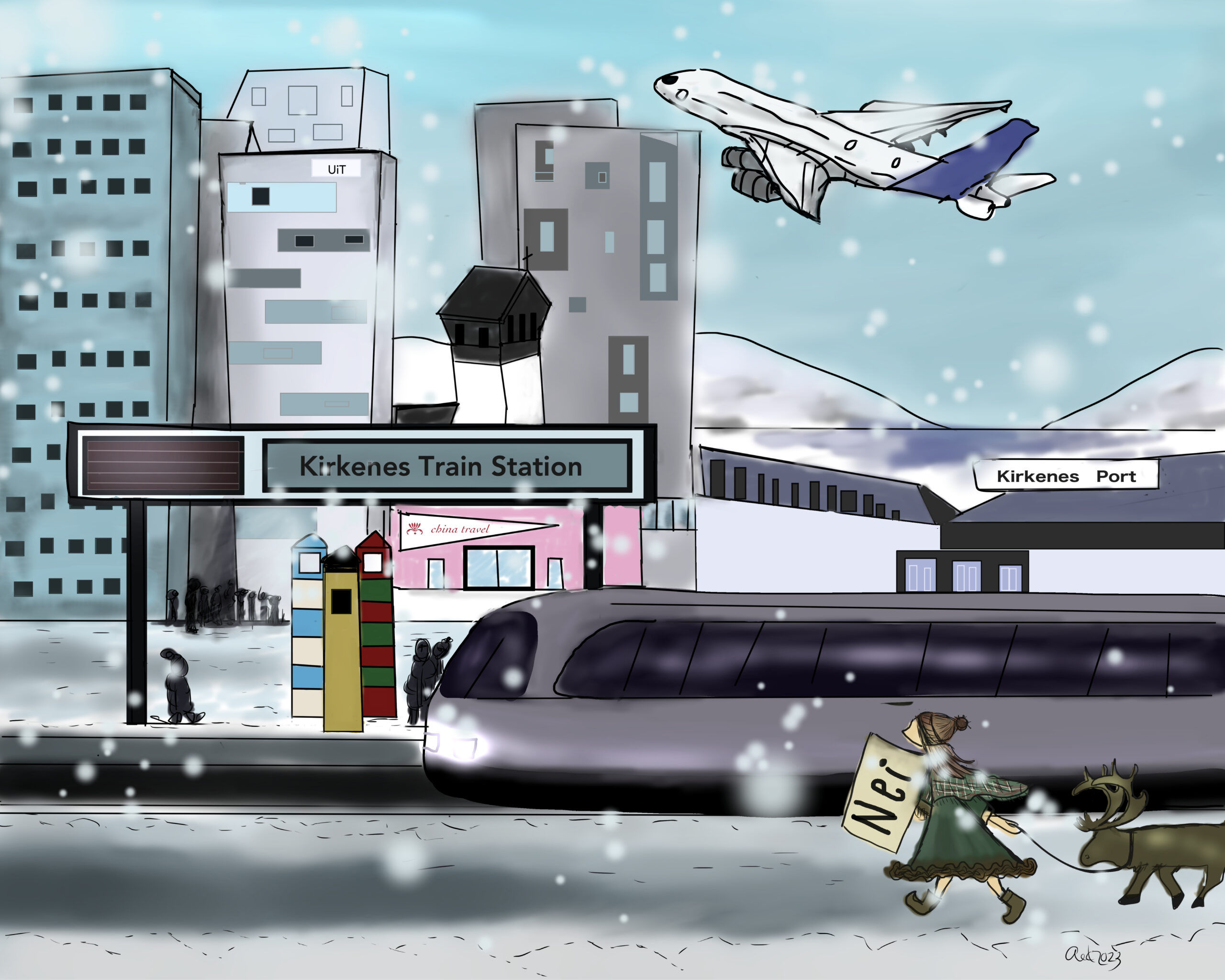“Education will decide what kind of future we are going to have”
By Olga Povoroznyuk
In this second future scenario, titled Global Transportation Hub, Kirkenes turns into a strategic node of global trade, in the next thirty to fifty years. Improved Russia-Norway relations establish the town as a gateway to the NSR and drive the construction of a modern deep-water port and a railway to Rovaniemi. Airport and road networks are upgraded to facilitate increased passenger traffic. The town’s emergence as a center for commerce, research, and education attracts a growing population. Innovative technologies mitigate climate change but create new challenges for minorities like Sámi reindeer herders.
Most of the workshops’ participants saw this scenario as a generally promising prospect for the community’s development. The growing science, education, and inflow of population presented here received a lot of positive assessments:
“I think the education sector will be deciding what kind of future we are going to have because it is the only sector that can bring our youth back to the town and lead to a more balanced population.”
At the same time, some of its elements – industrial and infrastructural development, environmental protection, and Sámi rights, were perceived as hard to reconcile:
“I would like to see this kind of bright future for Kirkenes because I love Kirkenes. I think it’s the most marvelous place to live. But still, it’s very hard to imagine how this will be possible to combine with reindeer herding, for example.”
Global trade, industrialization, and technological innovations were seen as having both positive and potential negative impacts on the community. For example, the idea of introducing nuclear power plants and the costs of the green transition for different groups of population were discussed. Impacts of transport infrastructure – the key feature of this scenario, were assessed in the contexts of sustainability, environmental footprint, and community well-being.
The majority of workshop participants perceived the idea of Kirkenes becoming a transportation hub as already being in progress:
“We already have a modern deep-water port. Maybe, we could have more. But almost 80% of the global fleet can go to Kirkenes today. That means that we are actually quite in front of what we are thinking.”
Likewise, our interlocutors highlighted that renovation of the airport and the road networks projected in the scenario are, in fact, already taking place. The more ambitious plans of becoming a global transportation hub, however, were seen rather as a long-term future in light of the war in Ukraine and the suspension of cooperation with Russia.
All in all, the workshops’ participants were eager to see Kirkenes turning into a science and education hub and an attractive place of living, at least from a long-term perspective. While easy access to nature was seen as a pull factor, lack of transport and urban infrastructure and opportunities for youth was considered to be a push factor in the context of ongoing demographic decline. Many interlocutors wished that tourism would be developing and hoped for stronger cooperation with Finland. Residents of Kirkenes and Sør-Varanger were looking forward to establishing more reliable transport infrastructure linking northern communities. While some expressed interest in a railroad, the majority stressed the importance of air transport and emphasized the need for road maintenance, bus connections, and maintenance of everyday infrastructure like trails.
